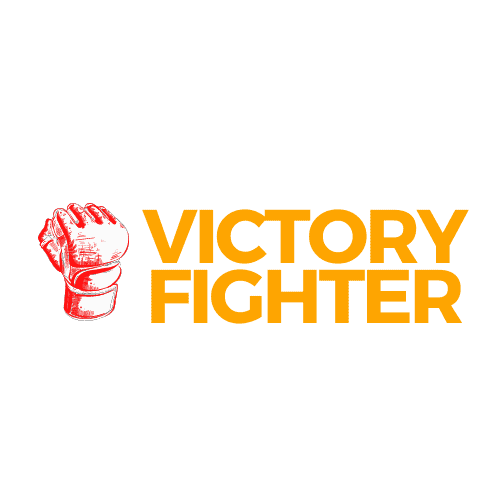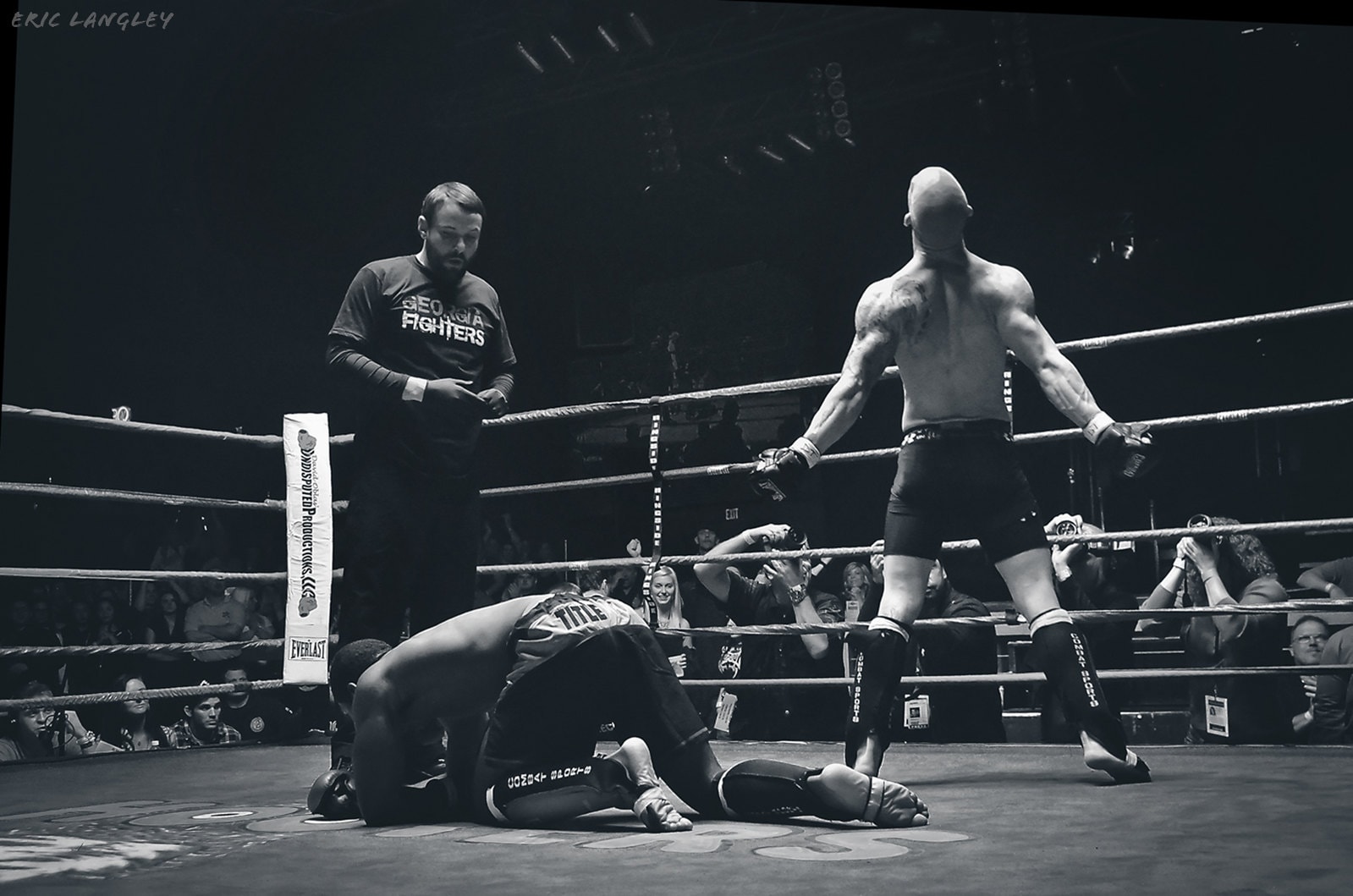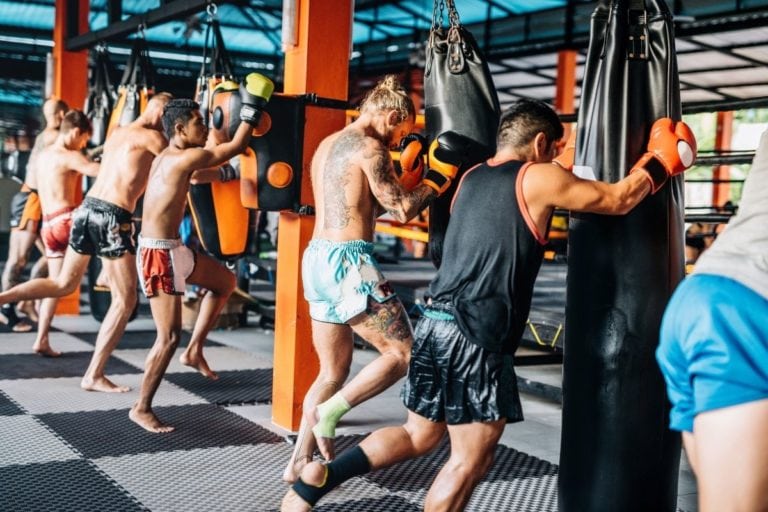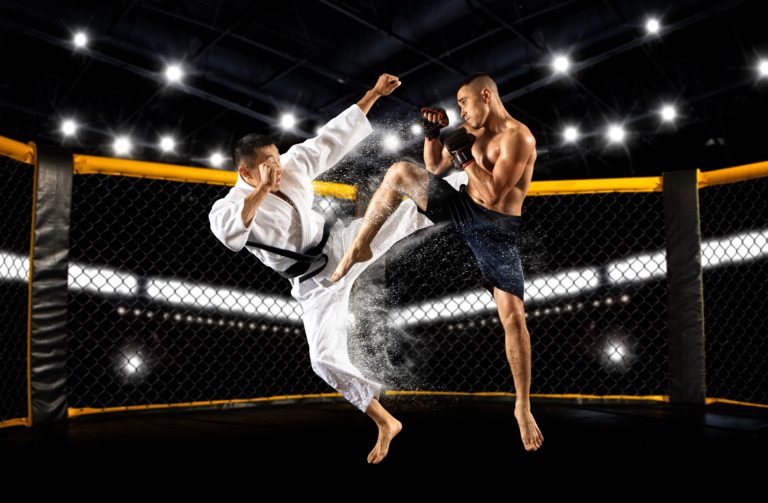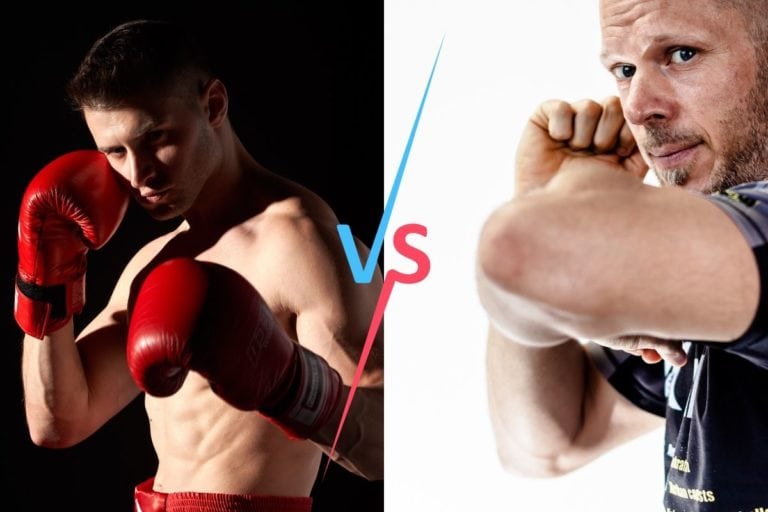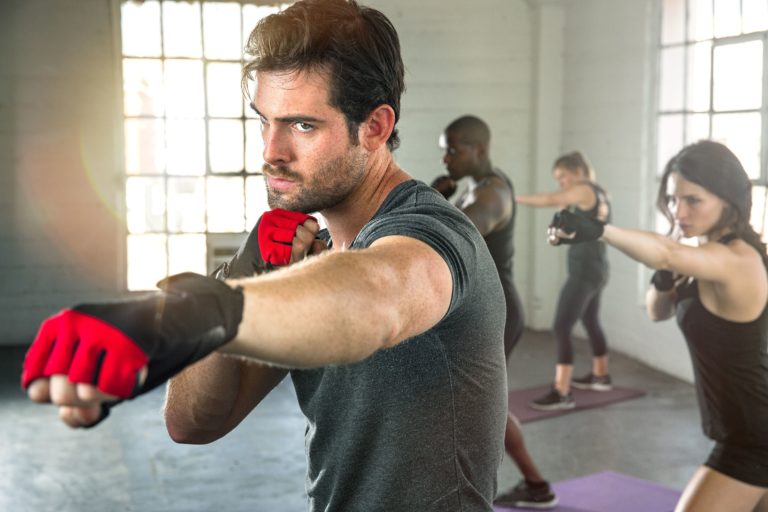How To Become An MMA Fighter
Let’s assume that you have decided to become an MMA fighter. You have conquered all the obstacles in your mind, got a blessing from your loved ones, and being a fighter is what you want to pursue in life, or at least try to. Though being motivated to chase your dreams is always a good thing, be sure to stay humble and realistic in your approach when it comes to fighting.
To become an MMA fighter, you first need to spend a year or two working hard in an MMA gym or martial art that plays a big role in cage fighting like Muay Thai or BJJ. After that, you must take part in around 10 amateur matches to gain valuable experience before you can turn pro.
Bear in mind that, out of millions of fighters, just a couple of hundreds make it to the UFC or other big promotions. Further, just a handful of UFC stars are able to cash out millions and live that rich lifestyle you can see on TV.
Read this article to learn more about what it takes to be an MMA fighter, and how you become one.
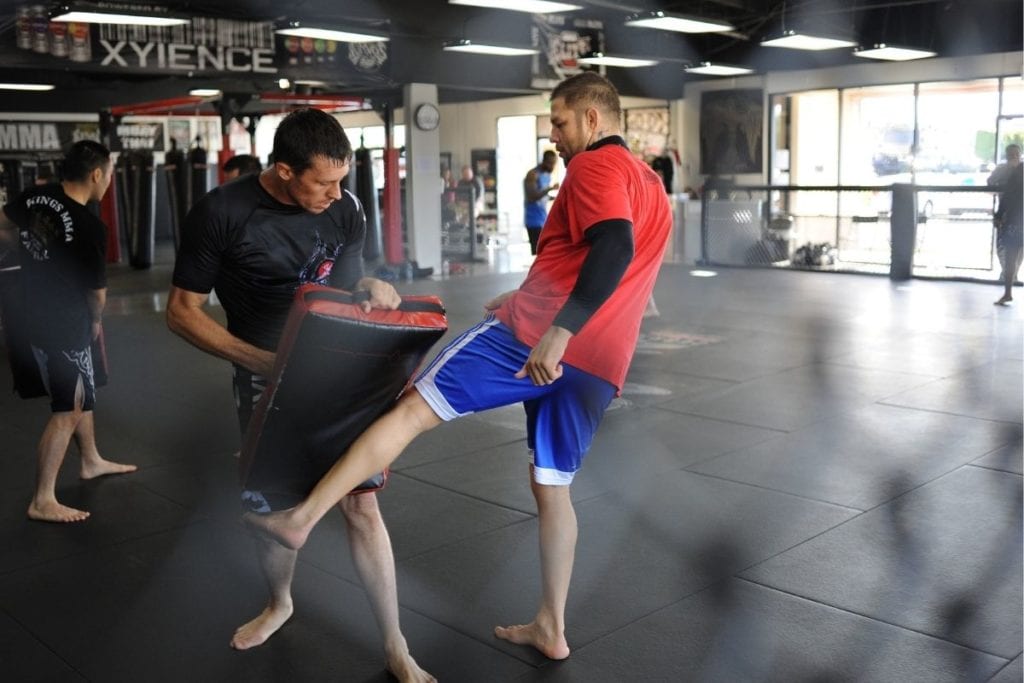
Find a martial art or MMA gym to train in
Do small research, find a gym near your home, pack your bag and hit the gym to sign up for the classes. Sounds simple, right? Well, choosing a gym to train in is not the same for MMA as it is for boxing or kickboxing. If you want to be a boxer, it’s quite simple; you go and train in a boxing gym. But if you want to be an MMA fighter, there are actually two roads you can take, and here is why.
MMA is the most versatile combat sport that consists of grappling and striking techniques put into one system. Fighters are allowed to strike on the feet using all limbs as weapons, grapple, and fight on the ground too. To cover all the aspects of the game and prepare for any scenario, they usually train in the following four martial arts:
- Boxing
- Muay Thai
- Brazilian jiu jitsu
- Wrestling
Your initial task will be to develop a solid base in one martial art on top of which you will later add other techniques needed to compete in MMA. Just about every UFC fighter, for instance, excels in one specific martial art, and over time, they add more skills from other martial arts to improve their game. In the best case scenario, people come into MMA with some type of martial art background, but let’s assume you don’t.
The first option is to choose one martial art out of the four presented above, and spend a year or more training hard before you start cross training in other arts. Which one works the best truly depends on your personal preferences. The main point is to develop a solid base, and later add more skills by cross training.
The second option is to go straight into the MMA gym, which is the road most people take nowadays. Each MMA gym includes BJJ, wrestling, and striking classes and you will switch between these on a weekly basis. This allows you to quickly develop all around skills, but the downside is that you won’t excel in one particular style.
Stay humble and train hard
To become an MMA fighter, you need to sacrifice a lot of things and dedicate your entire life to this goal. How much time you will need to spend training before you can start competing depends on various factors like:
- How talented you are?
- How fast are you learning and progressing?
- Are you dedicated and passionate enough?
A lot of young people make a mistake by getting into competition too early. This can only end in a bunch of lost amateur matches and your confidence destroyed. Don’t worry too much about WHEN you are going to start competing, a far more important thing is to be on the right track and your time will come.
On average, students need around 18–24 months of training before they can start thinking about competing. However, bear in mind that this is only in case you fully commit yourself to it by training 5–6 times a day, at times even a couple of times per day. Of course, some talented students or the ones with a strong base might reach that level in less time, while the others may need more. Once again, do not bother too much about this, stay focused on training and developing skills.
You will also need to pay more attention to what you eat, and in the best-case scenario, get rid of all the junk food. If you want to be a pro fighter, you must follow a strict diet program to keep your body healthy and strong.
One of the best indicators that you are ready for amateur competition is when you start feeling confident in sparring. MMA training puts a lot of emphasis on sparring as the best method one can prepare for real combat. Once you feel loose while trading punches or rolling on the ground, and capable of applying techniques the right way without thinking much about it, you are ready to go. This means that you have developed solid automatic reactions and the ability to stay calm in the heat of the moment.
In fact, your coach would probably offer you a spot in the amateur tournament before you even realize that you are ready.
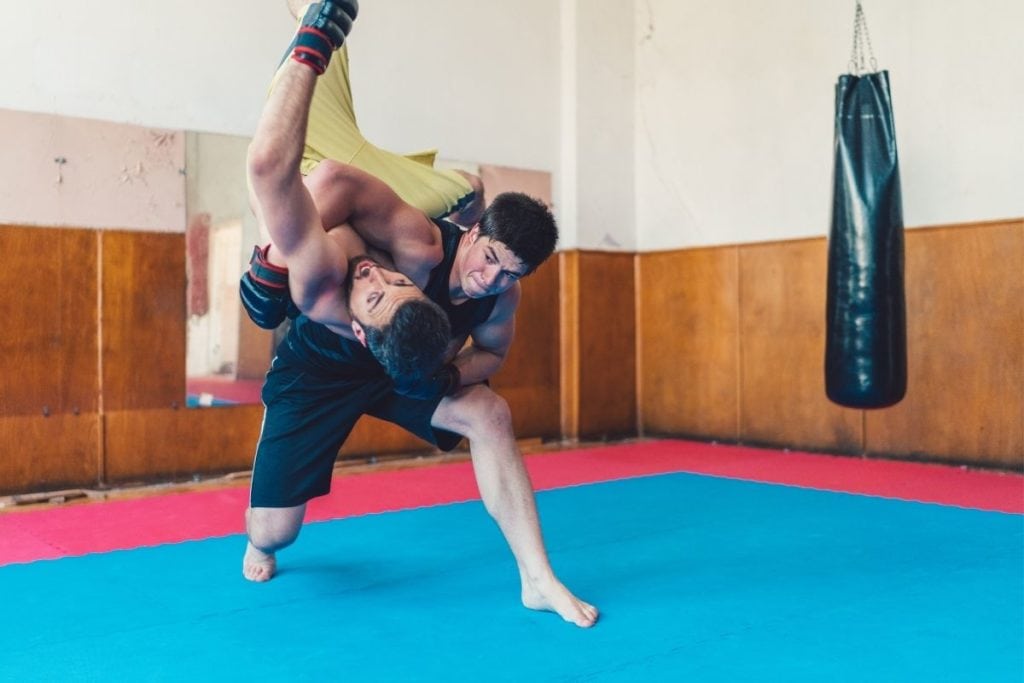
Start competing in amateur matches
Before you can start competing in pro-MMA matches, you must gain valuable experience fighting as an amateur first. Bear in mind that you won’t earn any money in amateur competition or fight in front of a large crowd. The entire focus of this type of competition is on gaining experience in matches against people who share the same level of skill.
Focus on learning
Amateur matches include less rounds, more safety gear like head guard, and even shin pads, and there are usually no elbow or knee strikes. It is much safer than pro matches but intense enough to give you a good insight into what you will encounter in the future. In some way, you can look at amateur matches as a more serious version of sparring where you don’t have to be too obsessed about losing.
Even if you do suffer a loss, take it as a lesson. It’s always better to get to know all of your weaknesses at this stage, than when it all goes to another level once you turn pro. You want someone to expose the lack of your ground or standup game as early as possible in your career so that you can fix it with your coaches in the gym.
But how many amateur matches should you do before turning pro?
Try to gain as much experience as you can on the amateur level because once you turn pro, there is no going back. Be sure to take part in as many matches as you can and get the most out of each one in terms of lessons.
Some fighters turn pro after a couple of matches, while others may stay on the amateur level for years. If you live in the area where amateur tournaments are held quite often, aim at around 10 matches before going to the pro level.
You have become a professional MMA fighter
Your life will change as soon as you turn into a pro competition. From the way you train, eat, and sleep to your lifestyle outside the gym, everything about your life becomes more serious. In an ideal scenario, you will increase the number of hours in the gym when it comes to both improving your fighting skills, and your strength and conditioning. What else changes?
Competition becomes tougher
Like all other MMA fighters who are just starting out as pros, you will start by fighting in small regional shows. Although a low level, these small shows will put your nerves and fears to the test and help you develop strong mental resistance. And by the way, do not expect to earn any money at this level. In the best case, you will earn enough to pay gym fees and keep your career running.
Increased stress and pressure
Working your way up on the regional scene is actually very hard and stressful. The stakes are high because a loss or two may destroy both your progress and confidence at the same time. Life outside of the gym comes to be more stressful too because, on one side, you have to be serious about your career and sacrifice a lot, but on the other, you will still need to work a full time job. But if you manage to sustain all the stresses and pressure, and keep winning, it won’t take long before you receive a call from a big promotion.
You need to make drastic changes
At some point, you will probably need to hire a manager to run your career. You won’t have enough time to answer the calls multiple times a day, negotiate, and deal with the paper work and many other things. If you live in a small town or one that doesn’t have an advanced MMA gym, you might even need to move to another town and join one of many top level MMA facilities if you are serious about reaching the top level.
How to get into the UFC?
UFC is the biggest MMA promotion and home to the finest athletes in the world. Going from the regional scene to the UFC is a long and tough road, the same as in basketball, for instance, and getting into NBA. Some people may receive a call from the UFC after just a couple of pro fights, while others may spend a decade fighting on the regional scene. It all depends on various factors like:
- A good manager — is a person who has the connections in the UFC, and if you are talented enough, they might use their reputation to secure you a shot.
- A title on the regional scene — winning a title in a smaller show is an indication that you are a special talent. In fact, a lot of small promotions have an agreement with the UFC where the champion of their organization automatically gets a shot in the UFC.
- Large fan base — modern day UFC is all about the numbers and how much pay per view sales you can generate. The scouts will look for the fighters who have a large fan base on different social networks, and give them a chance.
- Exciting fighting style — fighters who have exciting style and finish most of the fights are likely to receive a call from the UFC early in their careers. This is notably true if these wins came against the average or above the average competition.
